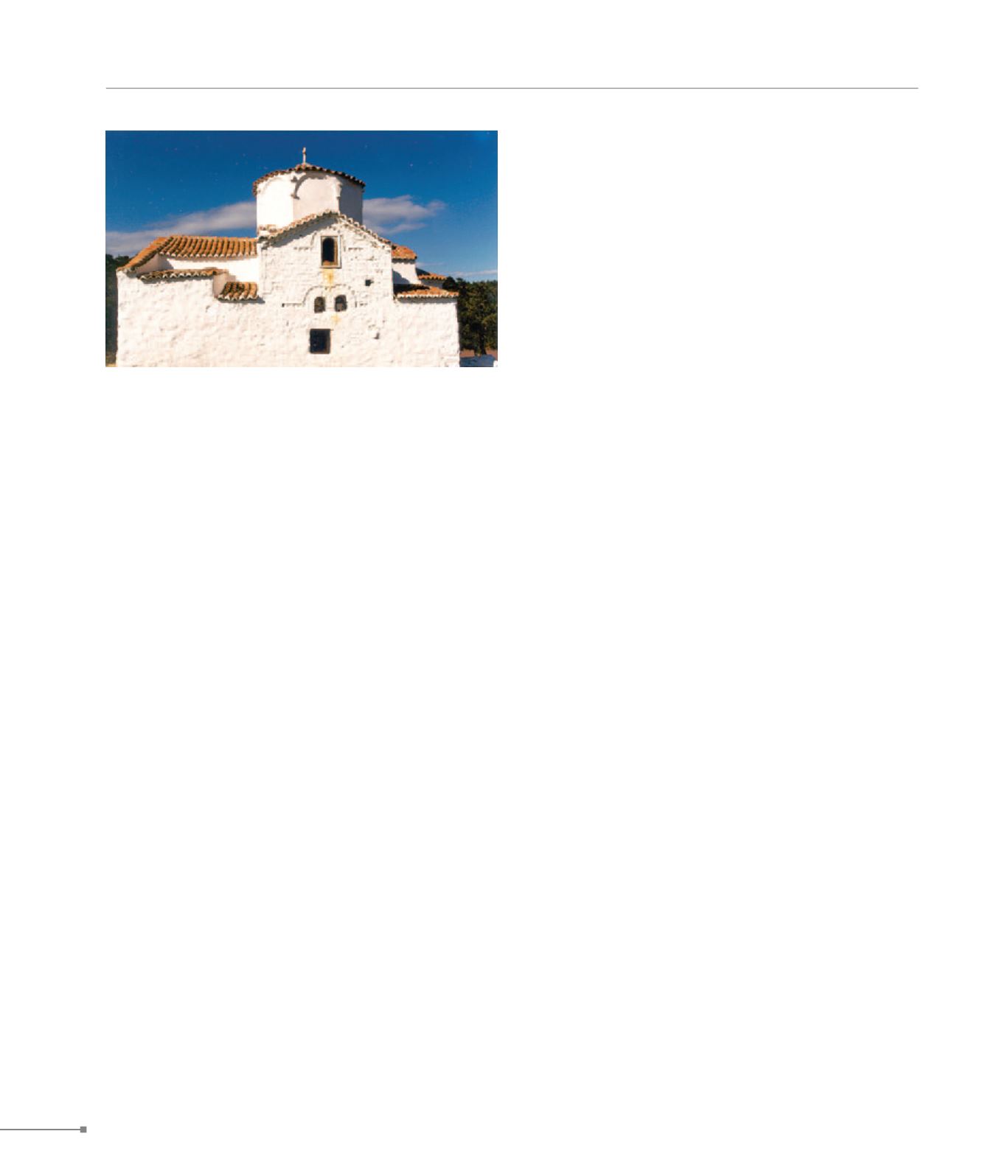
Steiri.
Εrmione.
PELOPONNESE
216
270. Steiri, Koimisis of the Theotokos (Στείρι, Κοίμηση της Θεοτόκου)
270.
Steiri.
The church on an elevation NE of Korphos village, the seaport
of Sophiko, may be associated with Hosios Loukas Steiriotis. It
was possibly built in the first half of the 11th c. and is a cross-in-
square church with a contracted W crossarm. Its wall-paintings
(1668) were created by iconographer Theodoulos Kakavas.
271.
Nea Epidauros.
On a rocky hill above Nea Epidauros is the fortress of Piada.
The original fortification must have been constructed by the
Byzantines just before the Crusades. The oblong wall on an
E-W axis stretches to the E, S, and W slopes. The N slope is so
steep that it has been left unfortified. The entrance is through
a gate in the E. In the W end of the fortress survive the ruins of
two churches and of a third barrel-vaulted, single-nave church,
dedicated to Saint John Theologos, with Post-Byzantine wall-
paintings. On the E façade is a 12th c. marble panel embedded
in the wall.
272.
Epidauros.
E of the propylaia to the Asclepieion lies a large five-aisled ba-
silica with transept, atrium, baptistery and other annexes, dat-
ing from the early 5th c. SW of the basilica, in the Asclepieion,
an early Christian residence with mosaic floor was investigated
earlier.
273.
Methana.
Methana is mentioned in the Synecdemus of Hierocles in the
6th c. In the 8th-9th c. it was attested as an episcopal see un-
der the Metropolis of Corinth (later incorporated in the episco-
pal see of Damalas). In 1212 Methana passed to the Frankish
duchy of Athens, in 1311 it was conquered by the Catalans for
a short period of time and in 1325-82 was taken over by the
Genoese Zaccaria family of Chios. Then it was occupied by the
Greeks and eventually, in 1460, by the Ottomans. On Prophitis
Elias hill are the remains of a Late Byzantine settlement. Mid-
Byzantine sculptures embedded in later churches, as well as
pottery, indicate the prosperity of this site at the time. Among
the Late Byzantine churches that survive is Saint Nicholas, at
Almyra, close to the medieval settlement of Palaiokastro, a tri-
conch church with cylindrical dome dating from the early 13th
c. To the same period is dated the barrel-vaulted, single-nave
church of Panagitsa, E of Megalochori, with wall-paintings from
the second half of the 13th c. The barrel-vaulted, single-nave
churches of Aghios Demetriοs and Saint John Theologos near
Kounoupitsa preserve wall-paintings of the period circa 1300.
The barrel-vaulted, single-nave naiskoi of Zoodochos Pege,
dated from the 13th c., have been incorporated into a later
structure near Aghioi Theodoroi village, as well as Aghioi Theo-
doroi church at the village’s cemetery. The naiskos of Aghioi
Asomatoi at Kypseli dates from the 14th-16th c.
274.
Thermesia.
This fortress was built in the Byzantine years but was most im-
portant in the years of Frankish and Venetian rule. Within the
fortress survive the ruins of an 11th c. church. Below the for-
tress, on the coast, there were extensive salt-pits.
275.
Εrmione.
At the location of the present-day city hall has been excavated
part of a three-aisled basilica with atrium featuring mosaic floors
of the early 6th c. The mosaic in the SW propylon dates from
the late 6th c. and according to an inscription the church was
renovated in the years of Bishop Epiphanius. In the N has been
revealed a quadrilateral structure with a semicircular apse, pos-
sibly a baptistery, while in the NW is the bishop’s palace. Mosa-
ic floors have also been revealed in Early Christian residences
within Ermione.


